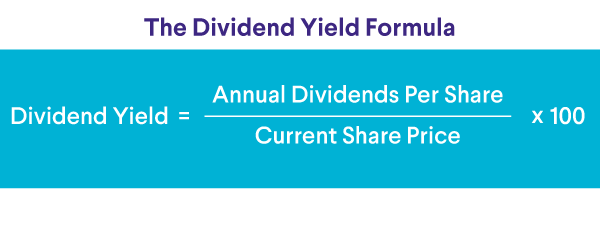What Happens to a Direct Deposit if It Goes to a Closed Account?
If a direct deposit goes to a closed account, it won’t vanish into the ether. This kind of issue can usually be resolved, and the money can get to its intended destination or be reclaimed.
It’s a common enough hiccup when a direct deposit goes to a bank account that is closed. Maybe the account holder shut it or the financial institution did, but either way, the money can be tracked and re-directed.
Key Points
• Direct deposits to closed accounts are usually returned to the sender.
• The bank may hold onto the funds and give the account holder time to reopen the closed account.
• Banks may issue a paper check to the individual who owns the closed account.
• To avoid a misdirected deposit, it’s important to double-check account numbers and cancel direct deposits before closing a bank account.
What Is a Closed Account?
A closed account refers to a deactivated or terminated account; in other words, it’s no longer open and available for deposits and withdrawals. The account holder, a custodian or the account, or the banking institution can usually close an account.
Why might a bank close an account? This can be what happens when your bank account is negative and you fail to replenish it and/or pay overdraft fees. Or perhaps the bank has seen activity they don’t think is legitimate, among other reasons.
Once this happens, it’s generally not possible to deposit funds by direct deposit or otherwise into the account. Often the term “closed account” refers to a checking or savings account, but it can also refer to a derivative trading, auto loan, brokerage, or credit card account.
What Can Happen to a Direct Deposit if It Is Sent to a Closed Account?
Sometimes, you may have gone to the trouble of setting up direct deposit in the past, but then the account later winds up closed. You might wonder what happens if a direct deposit is sent to a closed account.
Most banks have a standard process they follow when misdirected money is received. Here are a few different situations that can play out.
Direct Deposit Will Be Returned to the Sender
In many cases when someone tries to send money to a closed bank account, the bank will simply return the funds to the sender or decline the transaction. It can take about five to 10 days for funds to be returned to the sender. This timeline can speed up if the account holder to whom the deposit was intended is in good standing with the bank.
Bank Can Possibly Hold Funds
If a deposit is issued to a closed account, the bank may choose to hold onto the funds and may give the account holder time to reopen a closed bank account. Reopening a closed account, however, is only possible in a couple of scenarios. It’s not a sure thing.
Sometimes, a situation arises with what is known as a dormant account. This means there hasn’t been any activity over a period of time except for interest accruing. You may be able to get the account fully up and running again by contacting your financial institution.
In other cases, you might be able to reopen an account that is frozen. In the case of a frozen account, you may not be able to withdraw funds due to the financial institution’s decision (perhaps there is activity that doesn’t seem legitimate) or a court order (that is, a judgment against you). In some of these scenarios, you may be able to fix a frozen account by talking with your bank, or you may need legal assistance.
Banks may be more willing to work with customers if this is the first time a situation like this (meaning a dormant or frozen account) has happened. If a deposit was intended for you and you are able to reopen your account, this issue can resolve quickly—possibly within 24 hours.
Bank May Issue a Paper Check
Some banks choose to issue a paper check to the individual who owns the closed account. Other times, the company or individual with whom you set up direct deposit may get their funds back from the bank and then may make the payment via a paper check.
Get up to $300 when you bank with SoFi.
No account or overdraft fees. No minimum balance.
Up to 3.80% APY on savings balances.
Up to 2-day-early paycheck.
Up to $3M of additional FDIC insurance.
When Does a Bank Return a Direct Deposit to the Sender?
If a bank receives a direct deposit for a closed account or for a faulty account number, they may choose to return the direct deposit to the sender or to simply decline the transaction.
Can a Direct Deposit Reopen a Closed Account?
Occasionally, a direct deposit being sent to a closed account can trigger its reopening. A bank may choose to give a customer the chance to reopen their account. They might hold onto the funds until the account is reopened so they can complete the direct deposit.
This happens very much on a case-by-case, bank-by-bank decision. Communication with your financial institution can be very important in this situation.
Recommended: How Long Does a Direct Deposit Take to Go Through?
What Can I Do if My Direct Deposit Was Sent to a Closed Account?
If a direct deposit was sent into a closed account, the best thing to do is to contact the bank the funds were sent to. This can help you resolve the issue as quickly as possible. Every bank has its own processes for handling situations like this. Yours can help you understand what the best next steps may be.
The bank may or may not play a role in getting the funds to you. In some cases, you may need to deal directly with the payor. But in either case, your financial institution should be able to give you guidance.
Also, remember that while it can be stressful when a direct deposit goes to a closed account, the money won’t be lost. You should be able to get your funds back.
Avoiding a Misdirected Direct Deposit
To avoid having a direct deposit sent to a closed account, it’s best to get ahead of the issue. These are some steps you can take to help avoid a misdirected direct deposit.
• Double-check account numbers on direct deposit forms. Whenever filling out a new direct deposit form, it’s a good idea to double (if not triple) check the account numbers on the form. Likewise, if you are expecting a recurring direct deposit to a closed bank account, it’s important to get it redirected to a current open account and carefully check that the digits are correct.
• Cancel direct deposits before canceling a bank account. To help avoid any issues with direct deposits, it’s a good idea to cancel or alter any direct deposits before closing a bank account. Then, you can make sure payments are heading to a bank account that can receive the funds. That way, any issues can be resolved before the account closes so the money doesn’t get stuck in limbo.
Recommended: Are You Bad with Money? Here’s How to Get Better
Test your understanding of what you just read.
Banking With SoFi
Interested in opening an online bank account? When you sign up for a SoFi Checking and Savings account with direct deposit, you’ll get a competitive annual percentage yield (APY), pay zero account fees, and enjoy an array of rewards, such as access to the Allpoint Network of 55,000+ fee-free ATMs globally. Qualifying accounts can even access their paycheck up to two days early.
FAQ
Can a direct deposit go into a closed account?
If a direct deposit goes to a closed account, there are several outcomes that vary bank to bank. In some cases, the financial institution may hold onto the funds and let the customer reopen their account to claim the money; it might send the funds back to the payer or decline the transaction; or it may choose to issue a paper check to the payee.
How long does it take for a payment to bounce back from a closed account?
If an individual or business issues a direct deposit to a closed account, the bank may choose to either decline the transaction or send the funds back to the payer. If they choose to send the funds back to the payer, it typically takes anywhere from five to 10 days for them to get their money back.
What happens to money refunded to a closed bank account?
A few different scenarios can happen if money is refunded to a closed bank account. The bank can simply decline the transaction or to send the funds back to the payer. Other options include issuing a paper check to the payee or possibly holding onto the funds and giving the payee the option to reopen their closed account.
Photo credit: iStock/MissTuni
SoFi® Checking and Savings is offered through SoFi Bank, N.A. ©2025 SoFi Bank, N.A. All rights reserved. Member FDIC. Equal Housing Lender.
The SoFi Bank Debit Mastercard® is issued by SoFi Bank, N.A., pursuant to license by Mastercard International Incorporated and can be used everywhere Mastercard is accepted. Mastercard is a registered trademark, and the circles design is a trademark of Mastercard International Incorporated.
SoFi members with Eligible Direct Deposit activity can earn 3.80% annual percentage yield (APY) on savings balances (including Vaults) and 0.50% APY on checking balances. Eligible Direct Deposit means a recurring deposit of regular income to an account holder’s SoFi Checking or Savings account, including payroll, pension, or government benefit payments (e.g., Social Security), made by the account holder’s employer, payroll or benefits provider or government agency (“Eligible Direct Deposit”) via the Automated Clearing House (“ACH”) Network during a 30-day Evaluation Period (as defined below).
Although we do our best to recognize all Eligible Direct Deposits, a small number of employers, payroll providers, benefits providers, or government agencies do not designate payments as direct deposit. To ensure you're earning 3.80% APY, we encourage you to check your APY Details page the day after your Eligible Direct Deposit arrives. If your APY is not showing as 3.80%, contact us at 855-456-7634 with the details of your Eligible Direct Deposit. As long as SoFi Bank can validate those details, you will start earning 3.80% APY from the date you contact SoFi for the rest of the current 30-day Evaluation Period. You will also be eligible for 3.80% APY on future Eligible Direct Deposits, as long as SoFi Bank can validate them.
Deposits that are not from an employer, payroll, or benefits provider or government agency, including but not limited to check deposits, peer-to-peer transfers (e.g., transfers from PayPal, Venmo, etc.), merchant transactions (e.g., transactions from PayPal, Stripe, Square, etc.), and bank ACH funds transfers and wire transfers from external accounts, or are non-recurring in nature (e.g., IRS tax refunds), do not constitute Eligible Direct Deposit activity. There is no minimum Eligible Direct Deposit amount required to qualify for the stated interest rate. SoFi members with Eligible Direct Deposit are eligible for other SoFi Plus benefits.
As an alternative to Direct Deposit, SoFi members with Qualifying Deposits can earn 3.80% APY on savings balances (including Vaults) and 0.50% APY on checking balances. Qualifying Deposits means one or more deposits that, in the aggregate, are equal to or greater than $5,000 to an account holder’s SoFi Checking and Savings account (“Qualifying Deposits”) during a 30-day Evaluation Period (as defined below). Qualifying Deposits only include those deposits from the following eligible sources: (i) ACH transfers, (ii) inbound wire transfers, (iii) peer-to-peer transfers (i.e., external transfers from PayPal, Venmo, etc. and internal peer-to-peer transfers from a SoFi account belonging to another account holder), (iv) check deposits, (v) instant funding to your SoFi Bank Debit Card, (vi) push payments to your SoFi Bank Debit Card, and (vii) cash deposits. Qualifying Deposits do not include: (i) transfers between an account holder’s Checking account, Savings account, and/or Vaults; (ii) interest payments; (iii) bonuses issued by SoFi Bank or its affiliates; or (iv) credits, reversals, and refunds from SoFi Bank, N.A. (“SoFi Bank”) or from a merchant. SoFi members with Qualifying Deposits are not eligible for other SoFi Plus benefits.
SoFi Bank shall, in its sole discretion, assess each account holder’s Eligible Direct Deposit activity and Qualifying Deposits throughout each 30-Day Evaluation Period to determine the applicability of rates and may request additional documentation for verification of eligibility. The 30-Day Evaluation Period refers to the “Start Date” and “End Date” set forth on the APY Details page of your account, which comprises a period of 30 calendar days (the “30-Day Evaluation Period”). You can access the APY Details page at any time by logging into your SoFi account on the SoFi mobile app or SoFi website and selecting either (i) Banking > Savings > Current APY or (ii) Banking > Checking > Current APY. Upon receiving an Eligible Direct Deposit or receipt of $5,000 in Qualifying Deposits to your account, you will begin earning 3.80% APY on savings balances (including Vaults) and 0.50% on checking balances on or before the following calendar day. You will continue to earn these APYs for (i) the remainder of the current 30-Day Evaluation Period and through the end of the subsequent 30-Day Evaluation Period and (ii) any following 30-day Evaluation Periods during which SoFi Bank determines you to have Eligible Direct Deposit activity or $5,000 in Qualifying Deposits without interruption.
SoFi Bank reserves the right to grant a grace period to account holders following a change in Eligible Direct Deposit activity or Qualifying Deposits activity before adjusting rates. If SoFi Bank grants you a grace period, the dates for such grace period will be reflected on the APY Details page of your account. If SoFi Bank determines that you did not have Eligible Direct Deposit activity or $5,000 in Qualifying Deposits during the current 30-day Evaluation Period and, if applicable, the grace period, then you will begin earning the rates earned by account holders without either Eligible Direct Deposit or Qualifying Deposits until SoFi Bank recognizes Eligible Direct Deposit activity or receives $5,000 in Qualifying Deposits in a subsequent 30-Day Evaluation Period. For the avoidance of doubt, an account holder with both Eligible Direct Deposit activity and Qualifying Deposits will earn the rates earned by account holders with Eligible Direct Deposit.
Separately, SoFi members who enroll in SoFi Plus by paying the SoFi Plus Subscription Fee every 30 days can also earn 3.80% APY on savings balances (including Vaults) and 0.50% APY on checking balances. For additional details, see the SoFi Plus Terms and Conditions at https://www.sofi.com/terms-of-use/#plus.
Members without either Eligible Direct Deposit activity or Qualifying Deposits, as determined by SoFi Bank, during a 30-Day Evaluation Period and, if applicable, the grace period, or who do not enroll in SoFi Plus by paying the SoFi Plus Subscription Fee every 30 days, will earn 1.00% APY on savings balances (including Vaults) and 0.50% APY on checking balances.
Interest rates are variable and subject to change at any time. These rates are current as of 1/24/25. There is no minimum balance requirement. Additional information can be found at http://www.sofi.com/legal/banking-rate-sheet.
Financial Tips & Strategies: The tips provided on this website are of a general nature and do not take into account your specific objectives, financial situation, and needs. You should always consider their appropriateness given your own circumstances.
*Awards or rankings from NerdWallet are not indicative of future success or results. This award and its ratings are independently determined and awarded by their respective publications.
SOBNK-Q324-068
Read more

















